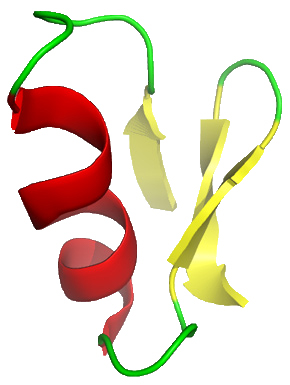
Chlorotoxin, a relatively small (36–amino acid) peptide is what makes the venom of the deathstalker scorpion (Leiurus quinquestriatus) poisonous. In 1991, J. A. DeBin and G. R. Strichartz at Harvard Medical School discovered that its mode of toxicity is to block small-conductance chloride channels, which results in paralysis.
Chlorotoxin preferentially binds to glioma cells, which prompted researchers to investigate it as a tool for diagnosing and treating some cancers. Building upon much of this research, J. M. Olson at Fred Hutchinson Cancer Center (Seattle) discovered a way to use chlorotoxin to image cancer cells—a product he calls Tumor Paint. An unusual aspect of Olson’s work is that he funded it via crowdsourcing when he couldn’t obtain grant money through the normal channels.

Learn more about this molecule from CAS, the most authoritative and comprehensive source for chemical information.
Molecule of the Week needs your suggestions!
If your favorite molecule is not in our archive, please send us a message. The molecule can be notable for its current or historical importance or for any quirky reason. Thank you!
Stay Ahead of the Chemistry Curve
Learn how ACS can help you stay ahead in the world of chemistry.

